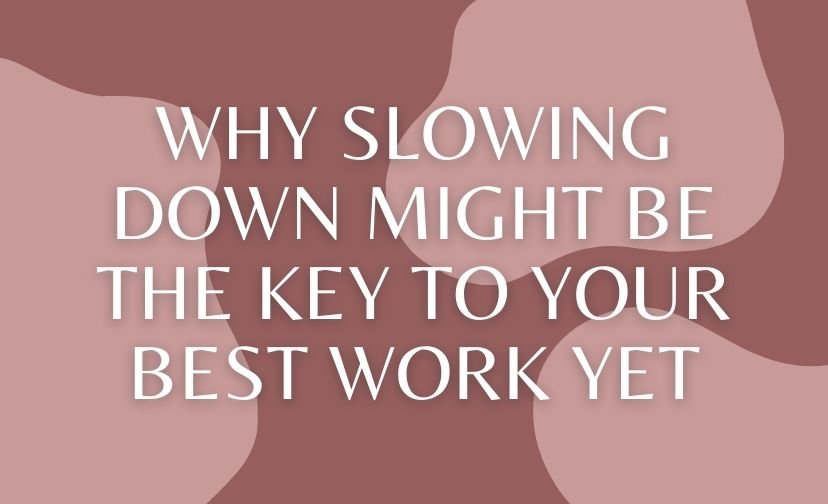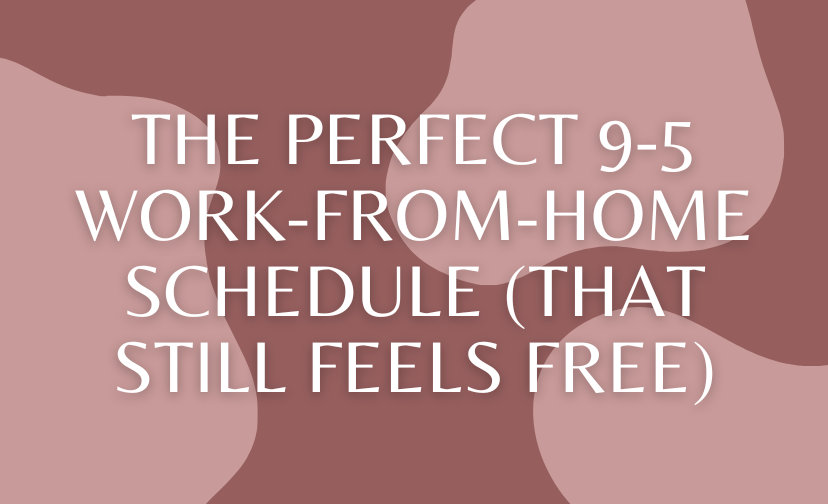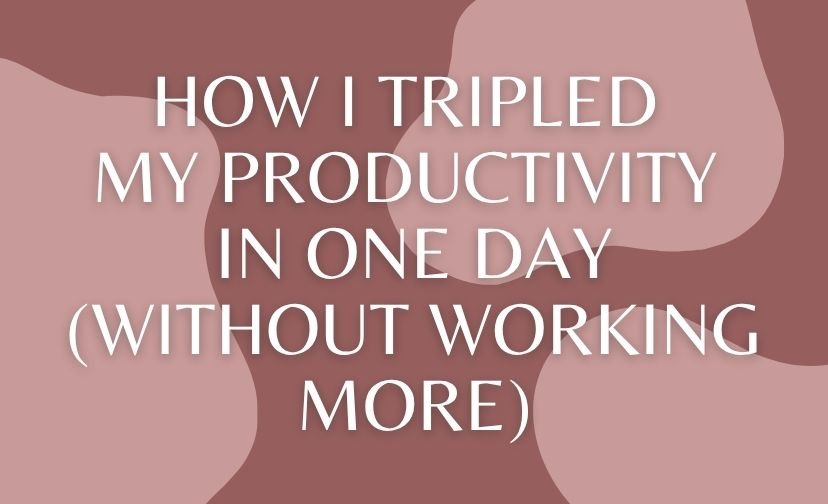In today’s fast-paced world, where hustle culture often reigns supreme, it’s easy to believe that constant motion and activity equate to success. But what if the secret to achieving your best work lies in doing just the opposite?
Slowing down productivity might seem counterintuitive, yet this approach is gaining traction among successful individuals and organizations. By embracing a slower pace, you might discover a treasure trove of benefits that can enhance both your personal and professional life.
The Case for Slowing Down: Understanding Productivity
We live in a society that values speed and efficiency, often equating busyness with success. But what if this frenetic pace is actually hindering our true potential? To understand the value of slowing down, it’s essential to redefine what productivity means in this context.
Defining Slowing Down Productivity
Slowing down productivity isn’t about laziness or shirking responsibilities. Instead, it’s a deliberate choice to focus on quality over quantity.
It involves taking the time to think deeply, make informed decisions, and engage fully with each task. This approach allows for better concentration, creativity, and ultimately, more meaningful work outcomes.
The Paradox of Pace: How Slowing Down Can Lead to More
There’s a paradox at play when it comes to productivity: by working slower, you can actually achieve more. This might sound like a contradiction, but consider this: when you’re not rushing, you’re less likely to make mistakes, miss details, or experience burnout.
A slower pace allows you to be more thoughtful and intentional, leading to higher quality work and increased satisfaction.
One tip for embracing slowing down productivity is to schedule regular “thinking time” into your day. Use this time to reflect, brainstorm, and plan without the pressure of immediate deadlines. This practice can lead to innovative solutions and a clearer path forward.

The Benefits of Embracing a Slower Pace
Embracing a slower pace can have profound effects on various aspects of your life, from boosting creativity to enhancing overall well-being. Let’s explore some of these benefits in detail.
Boosting Creativity Through Mindfulness
Creativity often flourishes in moments of stillness and reflection. When you slow down, you create space for your mind to wander, explore new ideas, and make unexpected connections.
Mindfulness practices, such as meditation and deep breathing, can enhance this creative process by keeping you grounded and focused on the present moment.

Enhancing Work-Life Balance for Better Well-Being
A slower pace can also contribute to a healthier work-life balance. When you’re not constantly racing against the clock, you have more time to nurture relationships, pursue hobbies, and take care of your mental and physical health. This balance is crucial for sustaining long-term productivity and happiness.
Reducing Stress and Preventing Burnout
Constant busyness can lead to chronic stress and eventual burnout. By slowing down, you allow your body and mind to recharge, reducing stress levels and preventing burnout. This not only improves your work performance but also enhances your overall quality of life.

Practical Strategies for Slowing Down
Implementing a slower pace in your daily routine doesn’t have to be complicated. Here are some practical strategies to help you get started:
Prioritizing Tasks: Less is More
Instead of juggling multiple tasks at once, focus on completing one task at a time. Prioritize your to-do list by identifying the most important tasks and dedicating your full attention to them. This approach not only enhances productivity but also reduces the stress of multitasking.
Mindful Breaks: Recharging Your Energy
Incorporate short, mindful breaks throughout your day to recharge your energy and maintain focus. Use these breaks to stretch, meditate, or simply breathe deeply. This practice can improve concentration and prevent mental fatigue.

Creating Boundaries: Work and Personal Life Balance
Establish clear boundaries between work and personal life to ensure you have time for both. Set specific work hours and stick to them, allowing yourself to fully disconnect and enjoy personal time without the intrusion of work-related thoughts or tasks.
Consider implementing a “digital detox” during your personal time by turning off notifications and stepping away from screens. This can help you fully engage with your surroundings and the people you care about.
Stories of Transformation: Successful Individuals Who Slowed Down
Many successful individuals have embraced the concept of slowing down productivity and reaped the rewards. Their stories offer valuable insights and inspiration for those considering a similar shift.
Case Studies of Prominent Figures Embracing Slow Productivity
Prominent figures such as Steve Jobs and Warren Buffett have famously advocated for the power of slowing down. Jobs was known for his focus on deep work and reflection, while Buffett attributes much of his success to his deliberate and thoughtful decision-making process.

Lessons Learned from Their Journeys
The journeys of these individuals highlight the importance of prioritizing quality over quantity, taking time to think deeply, and valuing rest and reflection. Their experiences serve as a reminder that slowing down can lead to greater achievements and personal fulfillment.
Mindfulness Techniques to Foster a Balanced Life
Incorporating mindfulness techniques into your routine can further support your journey toward a balanced and productive life. These practices can enhance your focus, reduce stress, and promote overall well-being.
Breath Awareness and Focused Attention
Practicing breath awareness can help calm the mind and improve concentration. Spend a few minutes each day focusing on your breath, noticing its rhythm and flow. This simple exercise can anchor you in the present moment and enhance your ability to focus.

Mindful Communication for Better Relationships
Mindful communication involves active listening and being fully present in conversations. This practice can improve relationships by fostering empathy, understanding, and connection. Take time to listen without interrupting and respond thoughtfully to others.
Embracing Vulnerability and Self-Compassion
Allowing yourself to be vulnerable and practicing self-compassion can lead to personal growth and resilience. Acknowledge your imperfections and treat yourself with kindness, especially during challenging times. This approach can enhance your emotional well-being and strengthen your ability to navigate life’s ups and downs.

Taking the First Steps: Your Journey to Slowing Down
Embarking on the journey to slowing down productivity requires intention and commitment. Here are some steps to help you get started:
Setting Intentions for a Slower Pace
Begin by setting clear intentions for adopting a slower pace. Define what slowing down means to you and identify specific areas of your life where you want to implement this change. Write down your intentions and revisit them regularly to stay focused and motivated.

Tracking Progress and Celebrating Small Wins
Keep track of your progress by journaling or using a planner to note your achievements and challenges. Celebrate small wins along the way to reinforce positive behavior and maintain momentum. This practice can boost your confidence and encourage continued growth.
Creating a Supportive Environment for Change
Surround yourself with supportive individuals who understand and encourage your journey toward slowing down. Share your goals with friends, family, or colleagues and seek their support and accountability. Creating a positive environment can make the transition smoother and more enjoyable.
Consider joining a mindfulness group or community to connect with like-minded individuals who share your goals. This can provide additional support, resources, and motivation as you embrace a slower pace.





